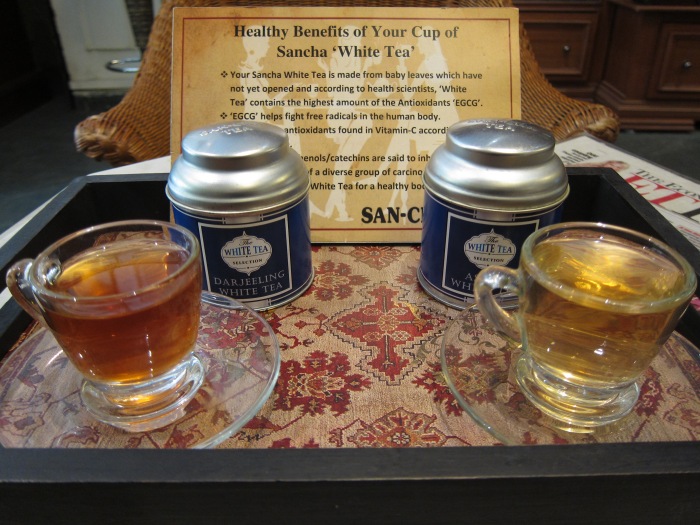
I spent a few days in Delhi to get over my jet lag prior to heading for the mountains of Himachal Pradesh. Of course I could see no better way to conquer jet lag than some hot tea, available everywhere on the subcontinent. But tea was not always as ubiquitous in India as it is now.
For centuries, China had a monopoly on the export of tea. In the 19th century Britain sent spies to infiltrate China and smuggle tea plants and tea masters out of China into India. Around the same time the British also learned of indigenous tea plants growing in India’s Assam region.
Today India produces more tea than any other country except China, and Assam is the single largest tea growing region in the world. The terroir and taste of India’s Darjeeling tea is considered so unique that it has been awarded “protected geographic indication” status by the World Trade Organization. But Darjeeling only accounts for about one percent of Indian tea production, and most of that is exported.
So what about the domestic market? Indians drink strong black tea made from CTC leaves, dust or fannings, boiled with milk and sugar, and properly known here as chai. Chai is often prepared with a special blend of herbs and spices, called a masala, and many a chai walla takes pride in his or her proprietary blend.

When I visited India as a child, this was the tea that my family would prepare and serve daily, and so it will always have a special place in my heart. I don’t have family in New Delhi, so home-brewed chai was not an option. Instead I ventured out into the narrow lanes and alleys of Old Delhi to find a few traditional chai wallas at work.



Near Delhi Gate I found a shop that sold loose tea. The shop assistant let me try a few teas before buying. Assam is famous for its strong, malty black tea, but I never knew that Assam also produced white tea! I was very pleasantly surprised by its gentle, sweet, floral notes, and I took a small tin of it away with me.

I also stopped by Cha Bar, the Oxford Bookstore’s modern, hipster tea house near Connaught Place, where I had a Darjeeling tea. The ambiance was blandly similar to that of some tea and coffee shops I’ve visited in the U.S., but the menu was anything but bland! The spectacularly spicy “veg sampler plate” of samosas and pakoras left me sweating profusely but happily satisfied.

Sources
Rose, Sarah. 2011. For All the Tea in China: How England Stole the World’s Favorite Drink and Changed History. New York: Penguin Group.
Koehler, Jeff. 2015. Darjeeling: The Colorful History and Precarious Fate of the World’s Greatest Tea. New York: Bloomsbury USA.
Yardley, Jim. “Good Name Is Restored in Terrain Known for Tea.” The New York Times. December 16, 2012.

Sharad! Glad you are enjoying Chai in Nava Delhi! And you are hanging out at the hipster Cha Bar! Who Knew! You take the perfect pictures to go with your story. Thanks for sharing, loved it!
LikeLike
Like the larger pics on this version of the blog. Glad you are back on the road! Damn hipsters, even there!
LikeLike
Very Interesting blog !!
LikeLike